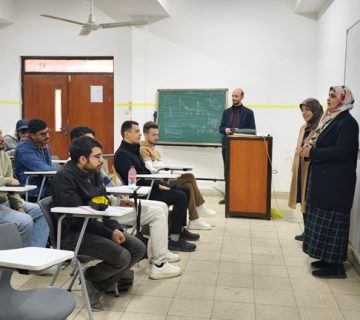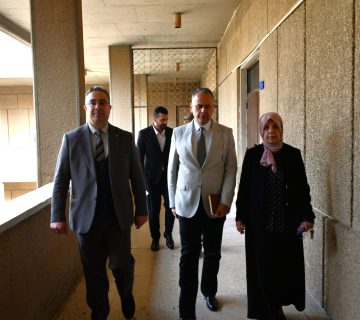Fire is one of the most important risks to concrete structures, it contribute to mechanical deterioration and explosive spalling of concrete. This study aim to investigate the effect of exposure to fire flame on the mechanical properties of lightweight self-compacting concrete (LWSCC) containing LECA as coarse aggregate reinforced with single and hybrid fibers. Two types of fibers were used in this study steel fiber (St) and polypropylene fiber (PP). Four mixes with different volume fraction of fibers (0% fibers, 1% St fiber, 0.75% St fiber + 0.25% PP fiber, and 0.5 % St fiber + 0.5% PP fiber) were made. In order to investigate the fresh properties of LWSCC; slump flow test, T500mm test, L-box test, V-funnel test and sieve segregation test were conducted. The results showed that all LWSCC mixes fall within EFNARC limits.
The hardened properties were assessed by conducted the following tests: compressive strength, splitting strength, flexural strength, thermal conductivity, water absorption, density, and modulus of elasticity at 28 days before burning. The results showed an improvement in the mechanical properties with addition fibers to the LWSCC mixes. When compared to reference mix (without fibers), the compressive strength increased by about (23, 18, 10)% for mixes containing 1% St, (0.75%St+0.25%PP), and (0.5%St+0.5%PP) respectively, while the percentage increases of modulus of elasticity was about (27, 18, 11)% for mixes containing 1% St, (0.75%St+0.25%PP), and (0.5%St+0.5%PP) respectively. The percentage increase in splitting strength was about (44, 36, 24) % for mixes containing 1% St, (0.75%St+0.25%PP), and (0.5%St+0.5%PP) respectively, as compared to reference mix (without fiber).
The percentage increase in flexural strength was about (58, 49, 36) % for mixes containing 1% St, (0.75%St+0.25%PP), and (0.5%St+0.5%PP) respectively, compared to the reference mix (without fiber).
After the specimens were cured for up to 28 days, it was kept under laboratory conditions until 56 days. After that, specimens were burned at different temperatures (300, 400, 600)˚C for a duration of one hour.The compressive strength, splitting tensile strength, flexural strength, and modulus of elasticity of all LWSCC specimens were determined after exposure to fire flame. The results indicate the percentage of residual compressive strength of LWSCC specimens at 300˚C was (80, 86, 84 and 81) %, at 400 ˚C it was (67, 78, 73 and 70) % and at 600 ˚C it was (38, 59, 54 and 49) % for specimens containing 0% fiber, 1% St, (0.75%St+0.25%PP), and (0.5%St+0.5%PP) respectively, compared with the specimens at laboratory temperature. The percentage of residual splitting tensile strength of LWSCC specimens at 300 ˚C was (70, 85, 80 and 76) %, at 400 ˚C it was (51, 68, 63 and 57) %, and at 600˚C it was (27, 53, 44 and 38) % for specimens containing 0% fibers, 1% St, (0.75%St+0.25%PP), and (0.5%St+0.5%PP) respectively, compared with the specimens at laboratory temperature. The percentage of residual flexural strength of LWSCC specimens at 300˚C was (68, 84, 79, and 76) %, at 400˚C it was (54, 72, 66, and 62) % and at 600˚C it was (25, 50, 40 and 34) % for specimens containing 0% fibers, 1% St, (0.75%St+0.25%PP), and (0.5%St+0.5%PP) respectively, compared to the specimens at laboratory temperature. While the percentage of residual elastic modulus of LWSCC specimens at 300˚C was (74, 86, 80, and 77)%, at 400 ˚C it was (53, 70, 63, and 58)%, and at 600 ˚C it was (24, 45, 40 and 34)% for specimens containing 0% fibers, 1% St, (0.75%St+0.25%PP), and (0.5%St+0.5%PP) respectively, compared to the specimens at laboratory temperature.







